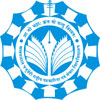- About Us
- Administration
- Academic
- Bhopal Campus (UTD)
- Khandwa Campus
- Rewa Campus
- Datia Campus
- PEO, PO, PSO
- Cells
- Admission Cell
- Student Grievance Cell
- Human Resource Development Center (HRDC)
- Training Academy
- Information & Technology Cell
- ICC Cell
- Women Development Cell
- Placement & Entrepreneurship Cell
- Career Counselling Cell
- Mentor-Mentee Cell
- SC/ST Cell
- NAAC Cell
- IQAC Cell
- Anti Ragging Cell
- Alumni Cell
- Consultancy Cell
- Science and Technology Cell
- RTI Cell
- IPR Cell
- RRF Cell
- Program Offered
- Academic Calendar
- Fee Structure
- Evening Course Fee Structure
- Conferences and Seminars
- Research Program
- Research and Research Consultancy Policy
- Teaching Learning Policy
- Curriculum Feedback
- Admissions
- Examinations
- Associated Study Institutes
- Student Corner
- Publications
- Campuses
- Amenities
- NAAC
- Contact Us
- About Us
- Administration
- Academic
- Bhopal Campus (UTD)
- Khandwa Campus
- Rewa Campus
- Datia Campus
- PEO, PO, PSO
- Cells
- Admission Cell
- Student Grievance Cell
- Human Resource Development Center (HRDC)
- Training Academy
- Information & Technology Cell
- ICC Cell
- Women Development Cell
- Placement & Entrepreneurship Cell
- Career Counselling Cell
- Mentor-Mentee Cell
- SC/ST Cell
- NAAC Cell
- IQAC Cell
- Anti Ragging Cell
- Alumni Cell
- Consultancy Cell
- Science and Technology Cell
- RTI Cell
- IPR Cell
- RRF Cell
- Program Offered
- Academic Calendar
- Fee Structure
- Evening Course Fee Structure
- Conferences and Seminars
- Research Program
- Research and Research Consultancy Policy
- Teaching Learning Policy
- Curriculum Feedback
- Admissions
- Examinations
- Associated Study Institutes
- Student Corner
- Publications
- Campuses
- Amenities
- NAAC
- Contact Us
आवश्यक सूचना: विश्वविद्यालय द्वारा परीक्षा संबंधी समस्त आवेदन ऑनलाइन स्वीकार किए जाने बाबत
You are here:
- Home
- Recent News
- आवश्यक सूचना: विश्वविद्यालय द्वारा परीक्षा…
